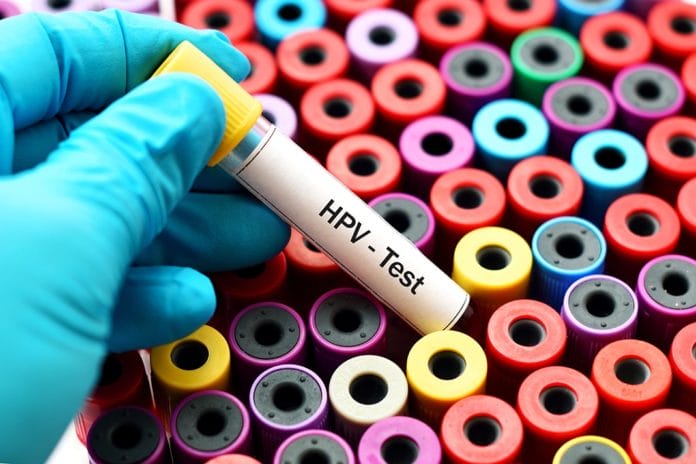Oral pathology has always been one of my favorite subjects to study for continuing education and while in school. Recently, while filling in for a new dentist, she remarked human papillomavirus (HPV) oral cancers were on the rise. So I began to study. I found HPV is a leading cause of oropharyngeal cancers and is thought to cause 70% of oropharyngeal cancers in the United States.3
What is the difference between the oral cavity and the oropharynx? According to the American Dental Association (ADA), the oral cavity includes the hard palate, retromolar trigone, the floor of the mouth, anterior two-thirds of the tongue, alveolar ridge and gingiva, buccal mucosa, labial mucosa, and lips. The oropharynx includes the soft palate, posterior one-third of the tongue (base of the tongue), posterior pharyngeal wall, palatine tonsil and vallecula, and lingual tonsil. The ADA also states, although they border each other, the oral cavity and the oropharynx are separate, non-overlapping anatomic regions.
HPV is the most common sexually transmitted infection in the United States. Of the more than 100 types of HPV, about 40 types can spread through direct sexual contact to genital areas, as well as the mouth and throat.2 Most HPV infections will clear up within two years. According to the CDC, it usually takes years after being infected with HPV for cancer to develop. It is unclear if having HPV alone is enough to cause oropharyngeal cancers, or if other factors such as smoking or chewing tobacco interact with HPV to cause these cancers.2
According to the ADA, the vast majority (85-90%) of HPV-positive cancers are associated with HPV-16 and HPV-18; two high-risk HPV types that are commonly associated with cervical cancer and other anogenital cancers. The HPV vaccine was developed to prevent cervical and other cancers of the reproductive systems.2 The vaccine protects against the types of HPV which can cause oropharyngeal cancers, so it may also prevent oropharyngeal cancers. However, studies have not conducted to test this hypothesis.
Two of the vaccines available are Gardasil and Cervarix. Both of these vaccines protect against the high-risk types HPV-16 and HPV -18. Gardasil also prevents the HPV types that cause genital warts. These vaccines are recommended starting at ages 9-11 for both males and females. The vaccine is recommended at earlier ages is so children receive the vaccine and are protected before they become sexually active.
The best way to screen for HPV-related oropharyngeal cancer is through a visual and tactile exam given by a medical or dental professional, who should also conduct a verbal medical history asking about signs and symptoms which cover things that are not visible or palpable.3 A thorough head a neck examination should be performed at each dental visit. Clinicians should be vigilant to:
- Conduct a comprehensive medical history review
- Take a history of their alcohol and tobacco use
- Inform and educate patients about the association of alcohol and tobacco use with oral cancer
- Follow-up to make sure a definitive diagnosis is obtained on possible signs or symptoms of oral or oropharyngeal cancer
Symptoms of Oropharyngeal cancer may include2:
- Hoarseness
- Swollen lymph nodes
- Pain with swallowing
- Unexplained weight loss
- Earaches
- Long-lasting sore throat
- Some people have no symptoms
Our job as clinicians is to make sure we are taking proper, comprehensive medical histories, including social habits such as tobacco and alcohol use. Knowing our anatomy to be able to perform a proper head and neck exam prior to the dentist’s oral cancer exam is essential. Educating patients on oral and oropharyngeal cancers and the link to human papillomaviruses, and the options to help prevent through CDC-recommended vaccinations of Gardasil or Cervarix.
Before you leave, check out the Today’s RDH self-study CE courses. All courses are peer-reviewed and non-sponsored to focus solely on pure education. Click here now.
Listen to the Today’s RDH Dental Hygiene Podcast Below:
SEE ALSO: Decade Long Study: Periodontal Disease and Its Link to Esophageal Cancer
DON’T MISS: The Relationship Between Poor Dental Hygiene and Cancer
References
- ADA. (2018). American Dental Association, Oral and Oropharyngeal Cancer. Retrieved from https://www.ada.org/en/member-center/oral-health-topics/oral-cancer
- CDC. (2018). Centers for Disease Control and Prevention. HPV and Oropharyngeal Cancer. Retrieved from https://www.cdc.gov/cancer/hpv/basic_info/hpv_oropharyngeal.htm
- OCF. (2018). The Oral Cancer Foundation. Information-Support-Advocacy Research…and Hope. Retrieved from https://oralcancerfoundation.org/dental/
- 4. ACS. (2017). American Cancer Society. HPV and Cancer. Retrieved from https://www.cancer.org/cancer/cancer-causes/infectious-agents/hpv/hpv-and-cancer-info.html











